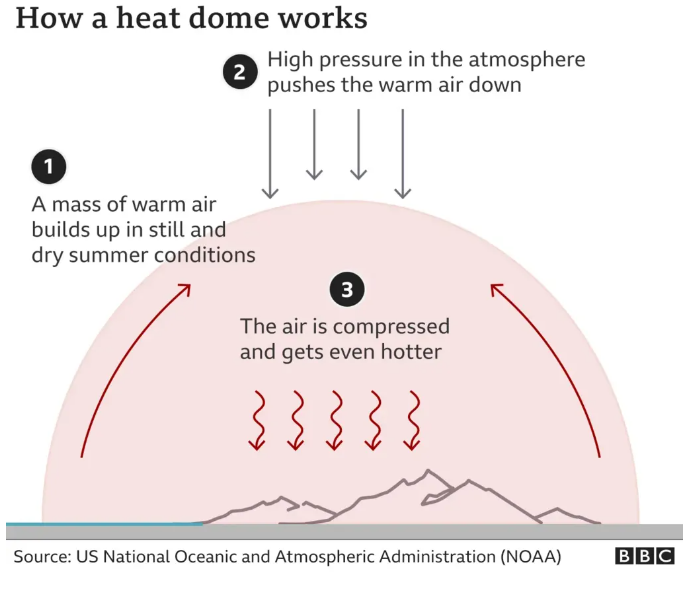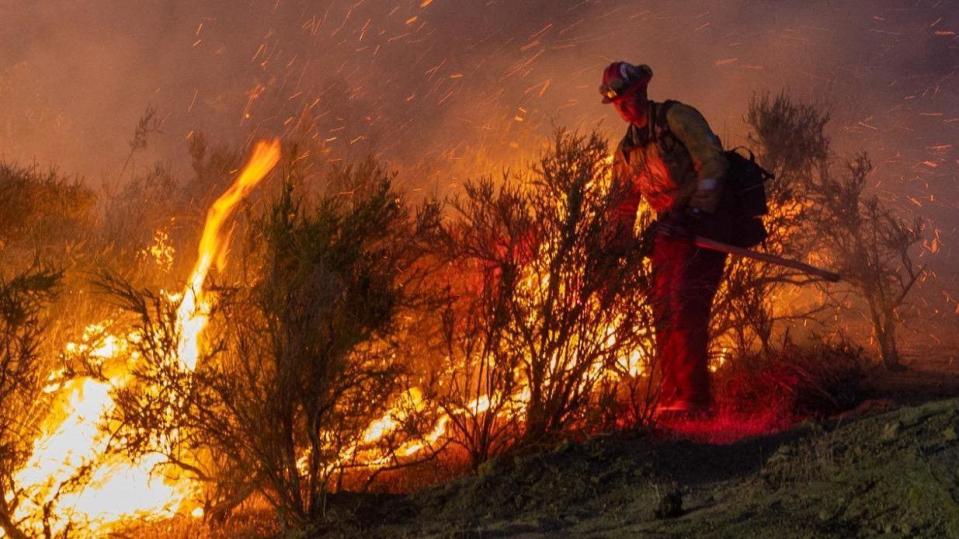One in five Americans under extreme weather alerts
More than 70 million Americans - about one in five of the population - are living under heat alerts as temperatures soar.
Warnings have also been issued in four Canadian provinces with much of the continent now gripped by the heatwave.
Officials say US temperatures could top 100F (38C) on Wednesday or Thursday. Chicago is among the places that have set a new daily record.
Scientists say extreme weather events are becoming more frequent and intense as a result of climate change.
Meanwhile, firefighters have been battling a wildfire north of Los Angeles that has forced hundreds of people to leave their homes.
Elsewhere, Texas is expecting heavy rain as a storm bears down - and parts of Montana are experiencing rare June snow.
The extreme heat has been described by the National Weather Service (NWS) as the region's first significant heatwave of the season.
The heat has been brought on by a "heat dome" phenomenon, in which a high pressure system hovers over the same area for a long time and traps warm air underneath.

On Tuesday, the NWS said the Great Lakes, Ohio Valley and Northeast would be worst-affected for much of the week - with record-breaking temperatures possible.
The hottest locations in interior northern new England could see triple-figure Fahrenheit readings, forecasters added.
Chicago surpassed its temperature record for 17 June on Monday, according to the local NWS office. Temperatures climbed fractionally higher than the all-time high of 96F that was recorded in 1957.
Among the other big cities that have been sweltering are New York, Philadelphia and Washington.
In Canada, the provinces of New Brunswick, Nova Scotia, Ontario and Quebec are also under heat warnings, and officials are warning of "dangerously hot and humid conditions".

People in the affected areas of both countries have been advised to limit outdoor activity and stay hydrated. Extreme heat is the most deadly of all weather conditions, experts say.
In the western US, California's largest wildfire of the year so far has burned more than 15,000 acres (6,070 hectares) of land since igniting over the weekend.
The Post Fire, north of Los Angeles, is about 20% contained, according to the Cal Fire website. Hundreds of people have been forced to leave their homes.
While large swathes of the US are seeing record highs, it is a very different picture elsewhere.
Preparations have been made for what could be the first tropical storm of the season, Alberto, which could bring large amounts of rain to the Gulf Coast, southern Mexico and parts of Central America.
And an NWS winter storm warning remains in place for parts of Montana, where heavy snowfall has been forecast.
Earlier this month, daily records were broken during another heatwave in the Southwest - two weeks before the official start of summer.
Triple-digit readings were logged in Phoenix, among other areas.
Heatwaves have become more frequent and more intense globally since 1950, says the UN’s climate body, the Intergovernmental Panel on Climate Change (IPCC).
That is because of human-caused climate change, which is fuelled by activities like burning fossil fuels and cutting down forests.
Hot extremes will happen even more often - and tend to reach higher temperatures – for as long as the world continues to warm, the IPCC says.
Europe is the fastest warming continent on Earth, with temperatures rising at twice the global average, according to the Copernicus Climate Change Service.
In April, Copernicus highlighted how climate change was already taking its toll on the health of Europeans - pointing to increasing numbers of deaths linked to extreme heat over the last 20 years.

